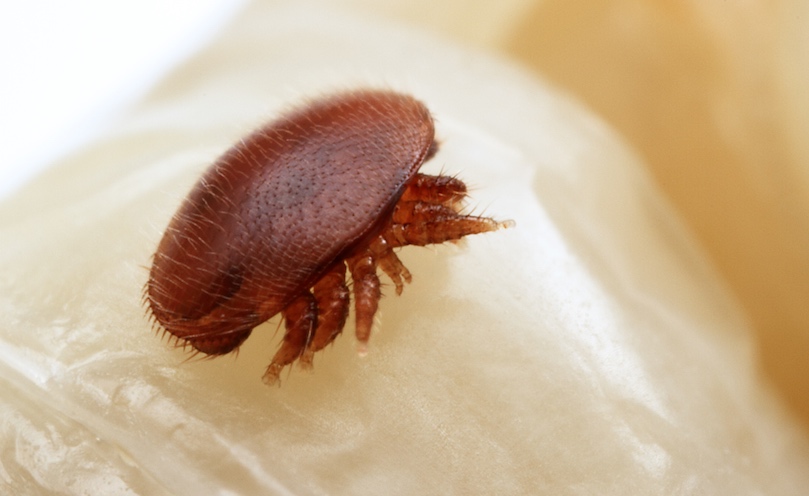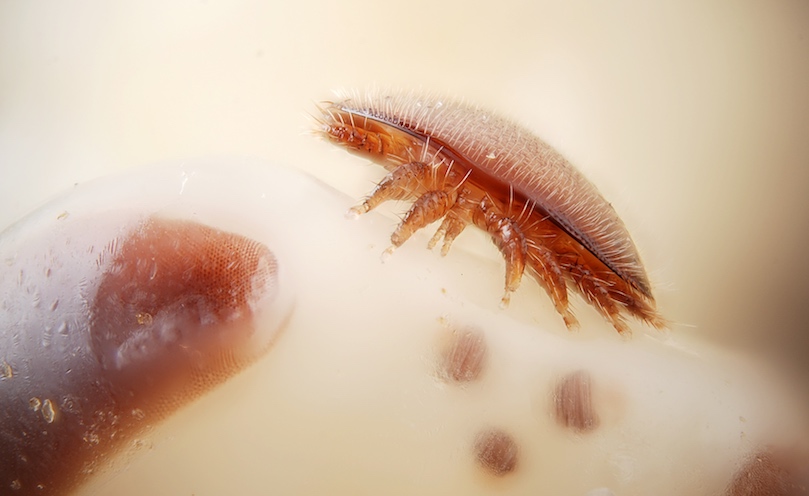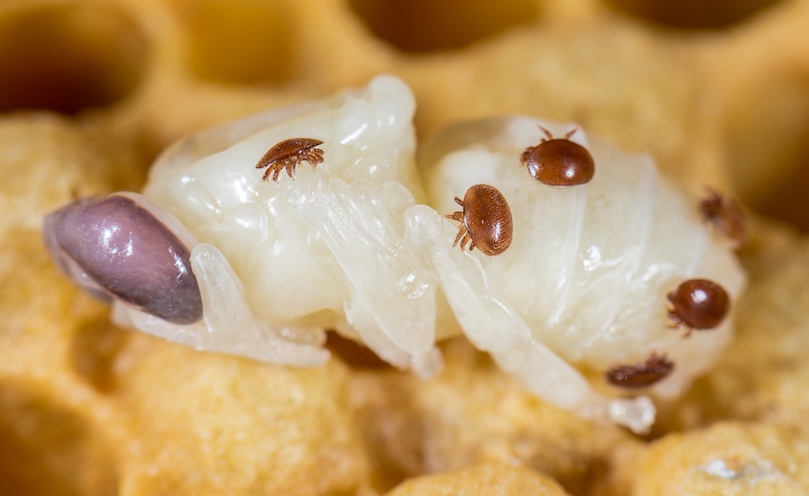The number one enemy of beekeepers: Varroa destructor
Varroa (Varroa destructor) is a parasitic mite of honey bees that is prevalent in Europe and almost all other countries globally. Its detrimental effects on honey bee colonies are well known. Varroa mites reproduce in the capped brood of bees, then spread throughout the bee colony, weakening them, and transmitting viruses and diseases.
It is estimated that an infested and untreated bee colony can die within 6 months to 2 years.1 Varroa mites will also be transmitted from one hive to another via adult bees (drift, robbing) or human activity (transhumance, importation of swarms, etc.).Thus contributing to the spread of the parasite between operations and countries.

Habit is the worst enemy in the fight against varroa.
We can no longer apply the same control strategy every year with the hope of achieving the same result.

Every year is different
The main difficulty of varroa control is to adapt and re-evaluate one’s practices constantly.
The infestation does not only vary between hives and apiaries but also from one year to another. Not to mention changing climatic conditions and changing population dynamics… We can no longer apply the same control strategy every year in the hope of obtaining the same result.
Did you know?
A varroa infestation of 3% can reduce honey production by an average of 5 kg of honey per hive and up to 13 kg per year.2
Integrated varroa mite management
Implementing an integrated control of this parasite is of major importance. It allows not only to control the infestation of the treated colony, but also to limit the sanitary impact on neighboring apiaries and the bee population in general.
The challenge is now to allow beekeepers to adapt treatments and control measures to each situation. This requires training for beekeepers, the availability of more effective and practical diagnostic tools, and the development of a greater number of authorized, effective and safe treatments (safe for the beekeeper, for the bees and for the products of the hive).


A popular guide for beekeepers summarising all the information about varroa mites: biology, mite monitoring and treatment strategy.

Clinical case: Persistent Varroa mite infestation despite rigorous monitoring
Cas clinique : dégradation sanitaire d’un rucher due à une pression varroa mal maîtrisée toute la saison, malgré une surveillance rigoureuse.

Apivar 2.0: a new weapon against varroa mites soon available in the USA!
Apivar 2.0: Faster varroa mite treatment with adaptable strip lengths & easy hanging for effective hive protection.

How replacing wax combs benefits bee health and varroa control
Learn how replacing wax combs improves honey bee health and aids in varroa mite control for better colony management.

Clinical case: Varroa management challenges in Iberian Black Bee colonies
Clinical case on managing Varroa destructor in Iberian bee colonies, highlighting challenges, monitoring strategies, and treatment for colony health.

Tropilaelaps mites: the next big beekeeping challenge
Learn how Tropilaelaps mites differ from Varroa, their impact on honey bees, and strategies for detection and management to protect your colonies.

Does a stronger bee colony lead to higher varroa mite infestation?
Strong bee colonies indicate good health and higher honey yields due to more foragers. However, more brood also means more varroa mites. How can we balance both?
References
1- Varroa mites and honey bee health: can Varroa explain part of the colony losses?, Yves Le Conte, Marion Ellis and Wolfgang Ritter, Apidologie 41 (3) 353-363 (2010)
DOI: http://dx.doi.org/10.1051/apido/2010017
2- Maisonnasse, et al, 2014. A study conducted by INRA found that a 3% varroa infestation cuts honey production by 5 kilos (11 lbs) of lavender honey per flow, or as much as 13 kilos (28 lbs) per year.
VTP-73-EU-N02-02/22
